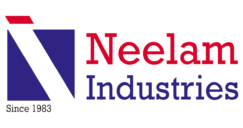The most important component of any pharmaceutical factory is water, which is strictly regulated when used in any amount for manufacture. Water is an essential resource used in energy transfer via heat exchangers, as a cleaning and sterilizing agent in CIP/SIP systems, and as a solvent for parenteral medications. Different grades of water are needed for each of these processes: pure steam, sterile water for injection, refined water, or water for injection. In the pharmaceutical and biopharmaceutical industries, as well as any other hygienic business, using a specific quality of water is a must.
This is why the water for injection plant manufacturer needs to have a clear understanding of the processes. Because failure to meet internationally recognized standards can have disastrous results: at worst, you might have to recall a product that may be contaminated and forfeit all of the money spent on its production; at worst, you might endanger the lives or health of the people who consume your product. The only way to avoid getting into either of these scenarios is to be aware of the differences between injectable water and purified water by the experts of water for injection plant supplier and to follow the rules as set forth by the relevant authorities.
Water, despite the same chemical formula used across the industries, has a number of complications associated with it. Like any other material, it draws impurities that lower the quality of pharmaceuticals it comes into touch with. Naturally, there are safeguards in place to reduce the amount of contaminants that pharmaceutical grade water is exposed to; high purity water is typically generated on-site to reduce its interactions with any contaminants. The strictest precautions are implemented when sterile water needs to be packed for subsequent use.
Furthermore, water must meet certain temperature, pressure, and flow rate requirements in order to be suitable for pharmaceutical applications, even in the absence of pyrogens and endotoxins. This makes it possible for the biochemical processes involved in the manufacturing of pharmaceuticals to proceed as intended.
Different grades of water
Maintaining water quality is absolutely necessary for water for injection plant manufacturer. When cleaning equipment, potable water—which has been minimally cleaned and is appropriate for home use—is used as an initial rinse. Because of its impurities, it is then treated into pure steam, water for injection, and purified water. Although it is very pure and non-pyrogenic, sterile injectable water should be used with caution when administering medical medications via parenteral route since it is hypotonic.
Purified water vs water for injection
Purified water is used in cleaning equipment. Products for topical and oral medications are made with it. It is employed in the tablet and capsule granulation process. It serves as clean steam and injection water feed water. As you can see, it is a crucial component in the manufacturing of pharmaceuticals.
How do you make purified water? The first step is pre-treatment, which might involve all or any of the dosing, softening, and chlorination procedures. These procedures are intended to remove viruses and germs, as well as calcium and magnesium salts, and to disintegrate precipitates such as sulfates and silica in water. Reverse osmosis, electro-deionization, and UV disinfection, alone or in combination, are the techniques used throughout the actual purifying process.
The principal uses of water for injection, or WFI, are in the manufacturing of large and small volume parenterals. Water for injection plant supplier is also used to clean any machinery or packaging that comes into contact with the parenteral, such as process pipework, vials, ampoules, caps, and more. The finest pharmaceutical grade water is utilized to prepare injections since parenterals are injected directly into tissues or the bloodstream, whether by subcutaneous, intramuscular, or intravenous administrations.
Reverse osmosis or distillation is used to prepare water for injection, followed by post-ultrafiltration to remove pyrogens and endotoxins. It is usually made in large quantities, and it is referred to as sterile water for injection when it is further packaged as individual dosages for direct medical use. Only very limited allowances are made for the existence of aerobic bacteria in these exceptionally high purity fluids, and tests are conducted for nitrates, heavy metals, appearance, conductivity, and bacterial endotoxins.
Storage and distribution methods differ between purified water and water for injection. Purified water systems use UV disinfection, while WFI requires periodic sterilization with superheated water.

